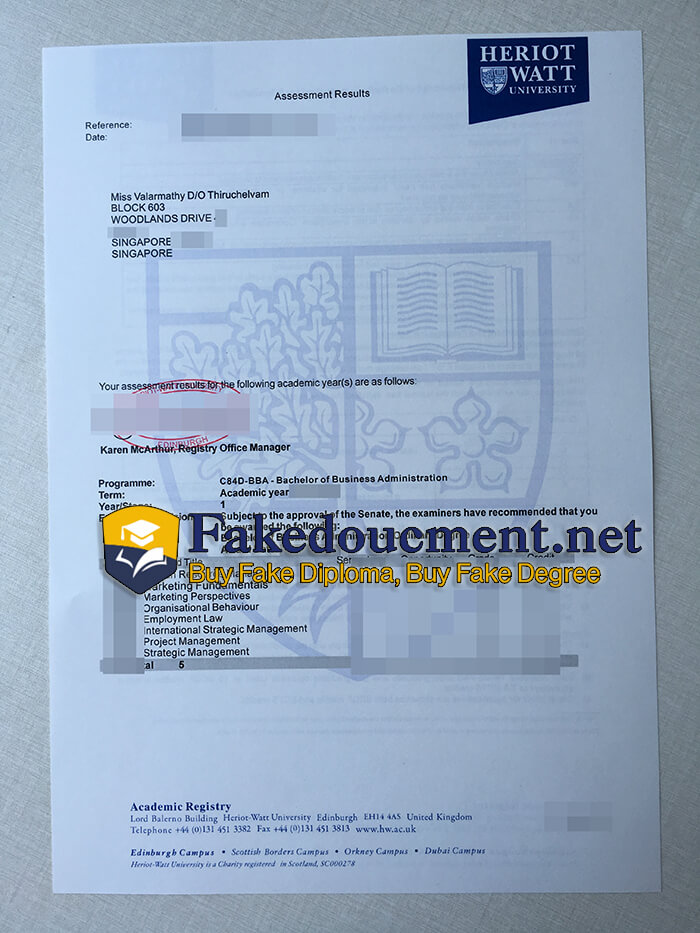
Where to order a realistic Heriot Watt University Transcript online? Why people would like to buy a realistic Heriot Watt University Transcript online? Which site is best to buy a realistic Heriot Watt University Transcript online? Heriot-Watt University is a public research university based in Edinburgh, Scotland. It has campuses in Edinburgh, Galashiels, Orkney, Dubai, and Malaysia. Heriot-Watt is known for its strong reputation in fields such as engineering, business, and the physical sciences.
The university offers a range of undergraduate and postgraduate programs across various disciplines and has a diverse international student community. Is there something specific you would like to know about Heriot-Watt University?
Heriot-Watt‘s time as the Watt Institution marked a transitional period for the organisation, as its curriculum broadened to include several subjects beyond mathematics and the physical sciences. While the School of Arts had catered almost exclusively to working-class artisans and technical workers, the Watt Institution admitted a large number of middle-class students, whom it attracted with new subjects in the sciences, social sciences and humanities. By 1885, the skilled working class were no longer the majority in an institution that had been created explicitly for them.
A shifting class make-up was not the only demographic change to affect the student body, as in 1869 women were permitted to attend lectures for the first time. This move put the Watt Institution some way ahead of Scottish universities, who were only permitted to allow women to graduate 20 years later following the Universities (Scotland) Act of 1889. The decision to admit women was made in large part owing to pressure from local campaigner Mary Burton, who later became the institution’s first female director in 1874.
In 1870, the Watt Institution was forced to move following the demolition of Adam Square. After a brief period on Roxburgh Place, it relocated to the newly constructed Chambers Street near where its former site had stood. The move caused the institution severe financial difficulties, which were compounded by a combination of declining funds from subscribers and increased costs from its growing student body.
In 1873, the directors turned to George Heriot’s Trust for support and agreed to a merger of the Trust’s endowment with the institution’s own. The proposed merger was provisional to changes in the structure of the Watt Institution, which would see the organisation become a technical college with representatives of the Trust in management positions. Accepting these changes, the Watt Institution officially became Heriot-Watt College in 1885 and was subsequently on far firmer financial ground.
After the establishment of Heriot-Watt as a technical college, the new management committee set about extending the institution’s buildings and strengthening its academic reputation. In its new form the college was one of only three non-university institutions in the UK with the power to appoint professors, and the first of these was appointed in 1887. In 1902 the college became a central institution, while in 1904 it introduced awards for graduating students which were similar to university degrees.






